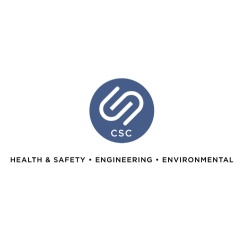Industrial Hygiene Services and Safety Data Sheets Identify Chemical Exposure Risks in the Workplace
Clark Seif Clark provides industrial hygiene testing and consulting services to identify and mitigate occupational hazards.
The SDS format is helpful for educating workers and employers must ensure that this information is readily accessible to employees for all hazardous chemicals in the workplace.
In 2012, the Hazard Communication Standard (HCS) (29 CFR 1910.1200(g)) was revised to require chemical manufacturers, distributors or importers to provide Safety Data Sheets (SDSs), formerly known as Material Safety Data Sheets or MSDS, to communicate the dangers of hazardous chemical products.
As of June 2015, the HCS requires that Safety Data Sheets be presented in a consistent user-friendly, 16-section format. To provide guidance to help workers who handle hazardous chemicals become familiar with the format and understand the various sections, the Occupational Safety and Health Administration (OSHA) provides the following descriptions:
- Section 1: Identification - Identification includes product identifier; manufacturer or distributor name, address, phone number; emergency phone number; recommended use; restrictions on use.
- Section 2: Hazard(s) Identification - Hazard(s) identification includes all hazards regarding the chemical; required label elements.
- Section 3: Composition/Information on Ingredients - Composition/information on ingredients includes information on chemical ingredients; trade secret claims.
- Section 4: First-Aid Measures - First-aid measures includes important symptoms/effects, acute, delayed; required treatment.
- Section 5: Fire-Fighting Measures - Fire-fighting measures lists suitable extinguishing techniques, equipment; chemical hazards from fire.
- Section 6: Accidental Release Measures - Accidental release measures lists emergency procedures; protective equipment; proper methods of containment and cleanup.
- Section 7: Handling and Storage - Handling and storage lists precautions for safe handling and storage, including incompatibilities.
- Section 8: Exposure Controls/Personal Protection - Exposure controls/personal protection lists OSHA’s Permissible Exposure Limits (PELs); ACGIH Threshold Limit Values (TLVs); and any other exposure limit used or recommended by the chemical manufacturer, importer, or employer preparing the SDS where available as well as appropriate engineering controls; personal protective equipment (PPE).
- Section 9: Physical and Chemical Properties - Physical and chemical properties lists the chemical’s characteristics.
- Section 10: Stability and Reactivity - Stability and reactivity lists chemical stability and possibility of hazardous reactions.
- Section 11: Toxicology Information - Toxicological information includes routes of exposure; related symptoms, acute and chronic effects; numerical measures of toxicity.
- Section 12: Ecological Information
- Section 13: Disposal Considerations
- Section 14: Transport Information
- Section 15: Regulatory Information
- Section 16: Other Information - Other information includes the date of preparation or last revision.
“The SDS format is helpful for educating workers and employers must ensure that this information is readily accessible to employees for all hazardous chemicals in the workplace,” said Zahid Iqbal, MPH, CIH and Technical Director at Clark Seif Clark (CSC). “While these documents provide valuable information if they are kept up to date and are complete, unfortunately this is not always the case. At CSC, our industrial hygiene professionals help companies and institutions maintain the appropriate and accessible SDSs to comply with OSHA regulations. We also offer worksite assessments; inspections; and industrial hygiene testing, monitoring and training services to protect workers.”
CSC has even sponsored an educational video about Safety Data Sheets and hazardous chemicals that can be seen at: https://youtu.be/hRmOgJVNCA0
To learn more about this or other occupational, indoor air quality, environmental, health and safety services, please visit www.csceng.com, email csc@csceng.com or call (800) 807-1118.
About Clark Seif Clark
CSC was established in 1989 to help clients in both public and private sectors address indoor air quality, occupational, environmental, and health and safety (EH&S) issues. CSC is a leading provider of these services with multiple offices along the western seaboard and southwest. The company believes in science-based protocols and has a strong background in engineering, making them the preferred environmental consultants to industrial clients, healthcare facilities, architects, schools, builders, contractors, developers and real estate professionals.
( Press Release Image: https://photos.webwire.com/prmedia/12710/228187/228187-1.jpg )
WebWireID228187
- Contact Information
- Paul Cochrane
- President
- Cochrane & Associates, LLC
- Contact via E-mail
This news content may be integrated into any legitimate news gathering and publishing effort. Linking is permitted.
News Release Distribution and Press Release Distribution Services Provided by WebWire.

